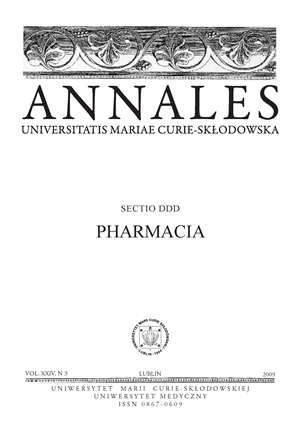Dobór najlepszego leku w oparciu o cechy patogenetyczne cukrzycy
Abstrakt
Przeprowadzono randomizowane, aktywnie kontrolowane badania w modelu cross-over u 56 pacjentów z nadwagą i nieadekwatną glikemią w celu poznania efektów leczenia z zastosowaniem pioglitazonu, metforminy i glimepirydu. Wyniki badań wskazują, że mimo normalizacji poziomów glukozy u pacjentów nadal występują inne procesy patofizjologiczne, takie jak oporność na insulinę, dyslipidemia i stan zapalny. Z tego też powodu, dobór właściwego leku nadal stanowi istotny problem w farmakoterapii cukrzycy.
Bibliografia
1. Ashcrof t F. M., Gribble F. M.: Sulfonilurea stimulation of insulin secretion: lessons from studies of cloned channels. J. Diabetes Compl., 12, 2182, 2000.
2. Auwerx J.: PPARγ, the ultimate thrifty gene. Diabetologia, 42, 1033, 1999.
3. Bailey C. J.: Treating insulin resistance in type 2 diabetes with metformin and thiazolidinediones. Diabetes, Obesity & Metabolism, 7, 6, 675, 2005.
4. Czyzyk A.: Are biguanide oral agents still useful? World Book of Diabetes in Practice, 2, 80, 1986.
5. Kennedy J. W. et al.: Acute exercise induces GLUT4 translocation in skeletal muscle of normal human subjects and subjects with type 2 diabetes. Diabetes, 48, 1192, 1999.
6. Sattar N.: Predicting type 2 diabetes: a role for novel parameters or simple prediction models? Clinical Laboratory, 29, 2, 7, 2005.
7. Singhal A. et al.: Adiponectin predicts insulin resistance but not endothelial function in young, healthy adolescents. Journal of Clinical Endocrinology & Metabolism, 90, 8, 4615, 2005.
Pobrania
Opublikowane
Numer
Dział
Licencja
Prawa autorskie (c) 2009 Autor

Praca jest udostępniana na licencji Creative Commons Attribution-NonCommercial-NoDerivatives 3.0 Unported License.


